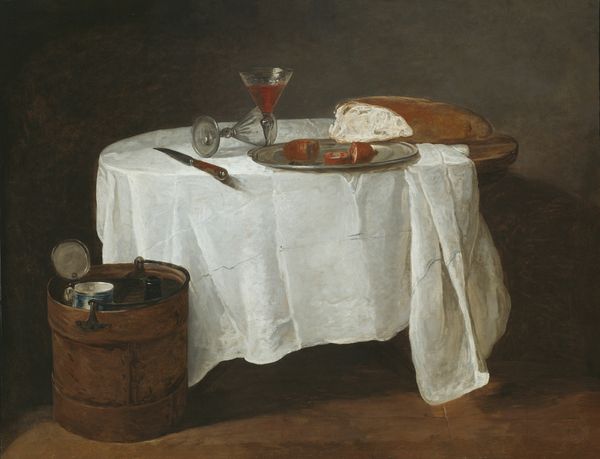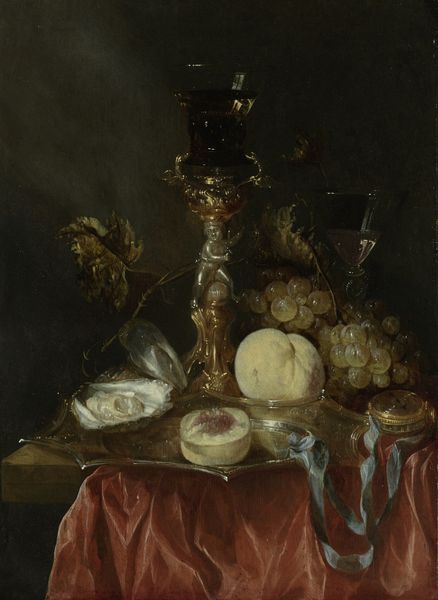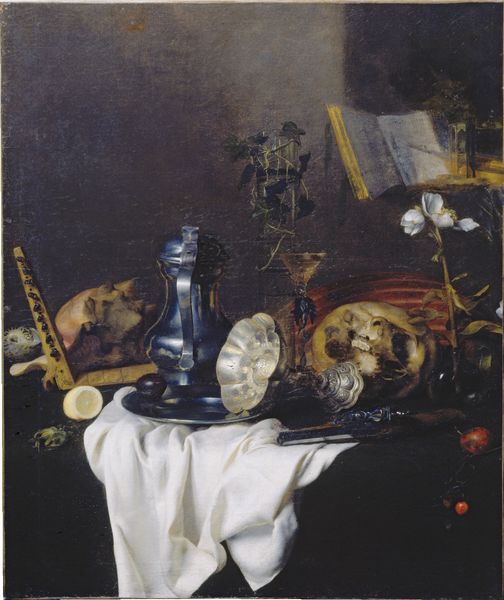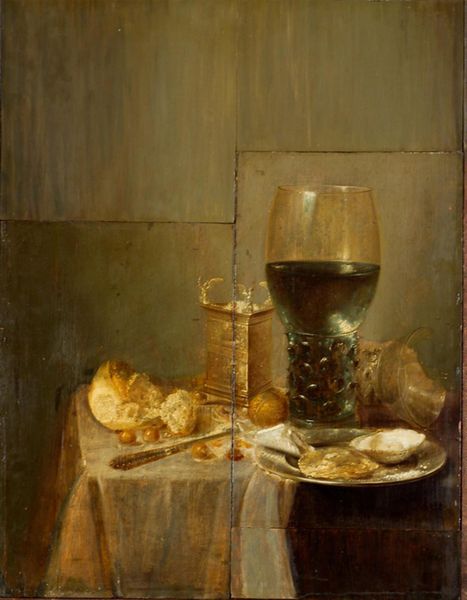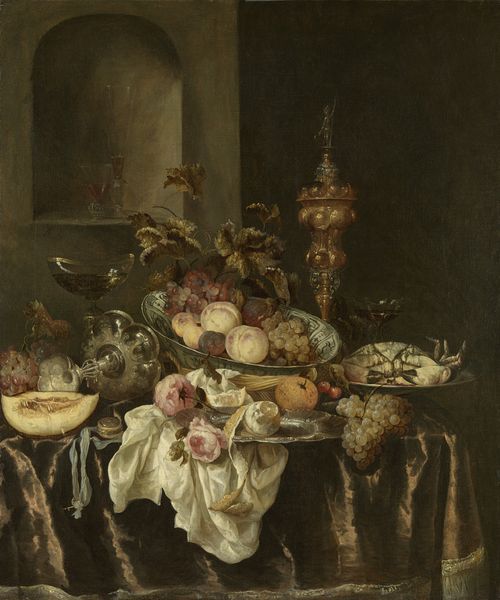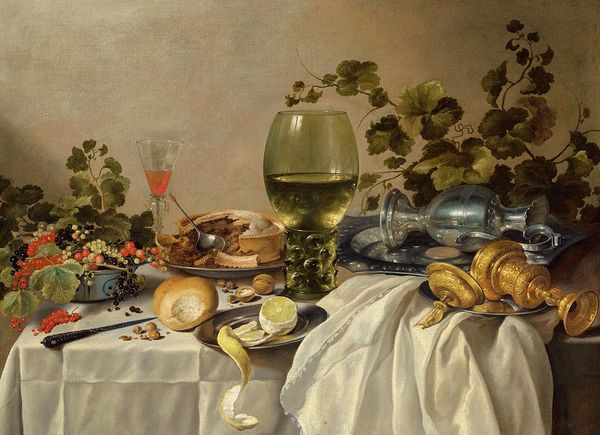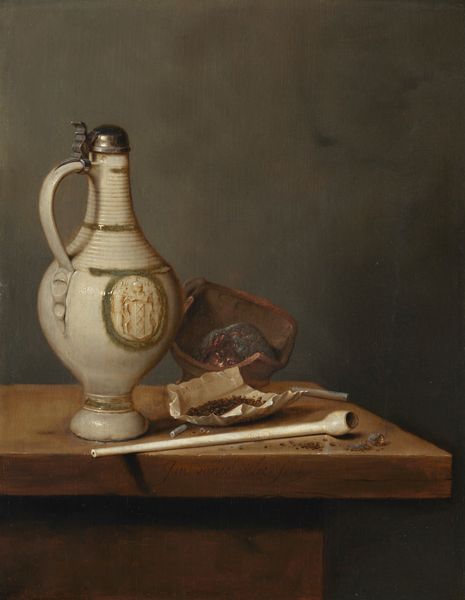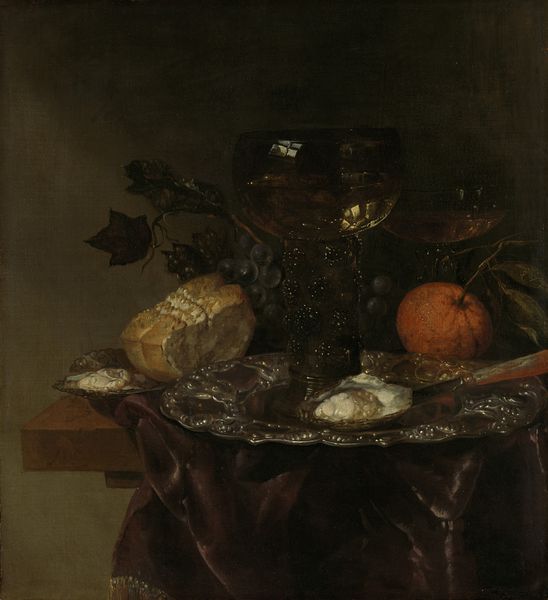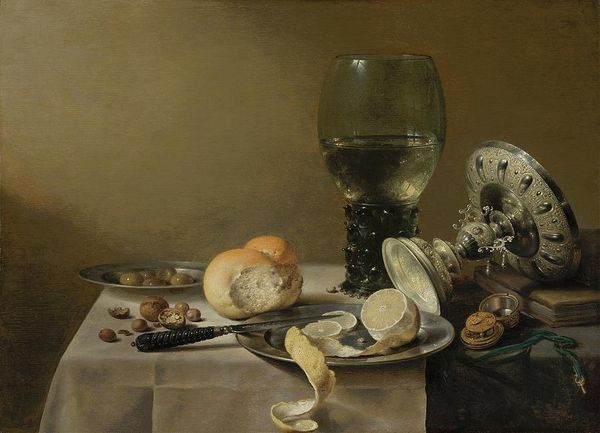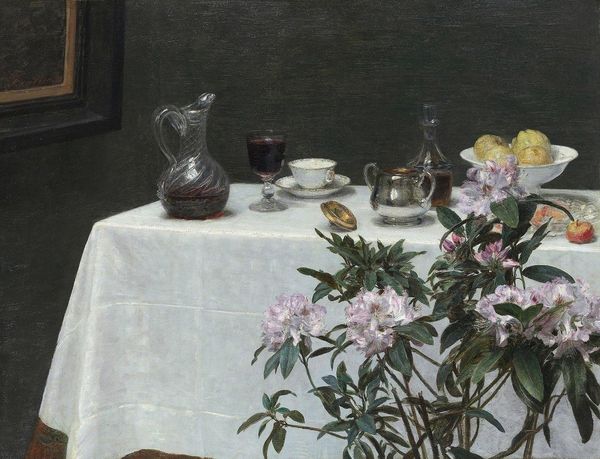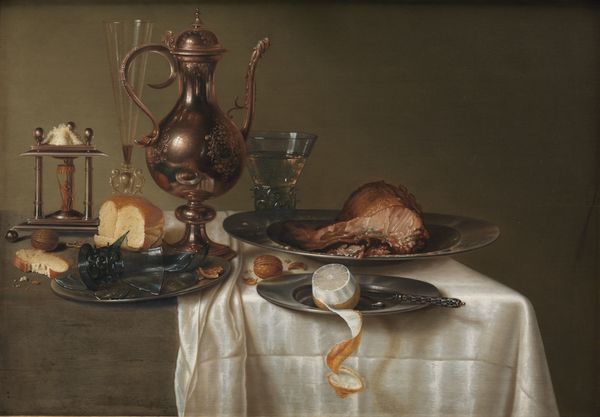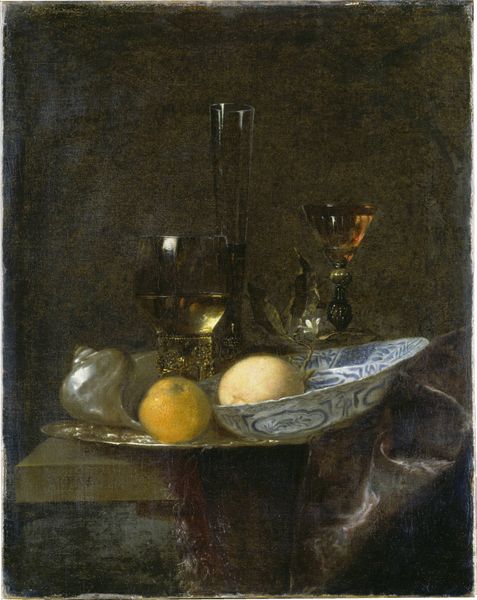
oil-paint
#
baroque
#
dutch-golden-age
#
oil-paint
#
oil painting
Dimensions: overall: 98.5 x 82.5 cm (38 3/4 x 32 1/2 in.) framed: 123.2 x 108 x 8.9 cm (48 1/2 x 42 1/2 x 3 1/2 in.)
Copyright: National Gallery of Art: CC0 1.0
Editor: So here we have "Still Life with Ham" from 1650, by Gerret Willemsz Heda, created with oil paint. What strikes me is how… edible everything looks. Like, if I reached into the canvas, I could grab that roll. It’s also impressive how Heda captured the different textures, from the shine of the metal to the softness of the linen. What catches your eye when you look at this piece? Curator: It makes my stomach rumble! Seriously though, what I find captivating about Heda is how he finds the extraordinary in the ordinary. Look at how the light glances across the pewterware, and the subtle contrast between the almost photographic rendering and those pops of expressive brushwork. Dutch Golden Age still lifes weren’t *just* about showing off wealth – they were loaded with symbolism, often with a moralistic undertone. See that half-eaten ham? Editor: Yeah? Curator: That reminds us that earthly pleasures are fleeting. The tilted glasses suggest… perhaps too much merriment? What do *you* think? Editor: Interesting! So, it's not just a pretty picture of lunch. It’s like a reminder to practice moderation? It does make you wonder who left the scene. I imagine a guest excusing himself, perhaps a bit tipsy, for a quick smoke… Curator: Precisely! Heda elevates something incredibly familiar into a contemplation on life and mortality. He makes us think – what is *truly* nourishing? And how easily do we succumb to excess? It is amazing that centuries later this scene invites these sort of wonderings and discussions. Editor: I’ll never look at a ham sandwich the same way again. I appreciate seeing how art from the past offers reflections about the present.
Comments
No comments
Be the first to comment and join the conversation on the ultimate creative platform.
